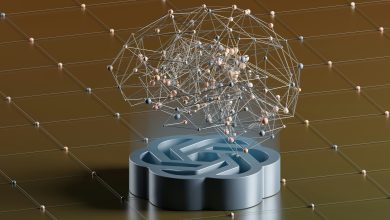
About the Author
Gunjan Agarwal, Software Engineering Manager at BigTech, is a technology leader with extensive experience in leveraging AI and automation to streamline engineering workflows. Throughout his career, Gunjan has been at the forefront of integrating cutting-edge tools and intelligent systems into complex engineering environments, driving innovation, efficiency, and sustainable development.
Recognised for his thought leadership in the field, Gunjan was invited to share his insights on how AI and automation are reshaping engineering management. In this article, he explores practical applications and emerging trends that are redefining the way engineering teams design, collaborate, and make data-driven decisions. His perspective highlights how embracing AI-driven processes can empower organisations to improve efficiency, reduce costs, and build a more sustainable technological future.
1. Optimising AI and Automation for repetitive activities
Management activities that are repetitive and low in value are among the first tasks to be delegated out with the advent of AI and automation, especially in engineering management. However, what is central to this discussion is the use of documents, in this case, updating documents and undertaking some headwork like verification, which could be done using AI based automation systems, thus, allowing for engineers to concentrate on higher value activities. This enables the engineering teams to be able to use their time more appropriately and in effect increasing the output of the companies .
Machine learning based automation systems are sufficiently advanced to write code, test it and validate the data. With the increase of RPA, engineering teams are able to enable cross functional workflows which will be able to increase both accuracy and speed. Not only does this increase the precision of the outcome by reducing human error associated with monotonous work, but also improves the output as well. Further, automated task management systems assist engineering leaders in monitoring the task, the workload, and the allocation of resources in real time enhancing agility in project management and enhancing the morale of the team.
Examples: UiPath and Automation Anywhere offer Robotic Process Automation solutions (RPA) which are designed to perform repetitive tasks such as data entry, invoice processing and report generation. This relieves engineers from monotonous clerical activities and enables them to concentrate on strategic areas of interest.
2. Innovation and Sustainability by Optimising Design Processes
AI can profoundly change the design stage of engineering as it provides tools that allow quickly analysing results, building simulated environments and producing prototypes. Also, as automated algorithms and generative design are refined, the engineering teams can specify design constraints such as material, cost and performance limits, and best solutions are generated that meet these requirements. This in turn results in better allocation of resources with regards to time, materials and money spent.
Beyond improving efficiency, AI-driven systems are transforming software engineering by enhancing innovation and promoting sustainability. AI-powered development tools optimize code quality, performance, and resource allocation, ensuring that software applications are more efficient and scalable. By analyzing vast datasets—including performance metrics, user behavior, and system logs—AI can suggest optimized architectures, refactor inefficient code, and even automate performance tuning, leading to sustainable software development practices.
Additionally, AI-driven code generation and automated testing significantly reduce the need for redundant work, minimizing computational waste and cutting down on energy-intensive development cycles. Cloud-based AI systems can dynamically allocate computing resources, ensuring optimal server utilization and energy efficiency, which contributes to a greener digital ecosystem.
By integrating AI into software engineering, companies can build resilient, high-performance applications while addressing key industry challenges such as cost efficiency, ecological compliance, and sustainable software development.
Examples: Autodesk applies generative design AI within its Fusion 360 software. Designers have some parameters to consider such as limiting weight and cost, determining types of materials etc. Consequently the AI algorithms go through many alternatives and suggest a solution which is most of the time something which has not been thought of or is very hard to accomplish for human beings. This is applied in quite a wide range of fields starting from the aerospace industry and even consumer product design. Siemens resorts to AI for optimisation simulation and analysis in its NX program, enabling Engineers to view the design in a more manipulating manner within the virtual space prior to the realisation of physical models. Consequently, it accelerates the processes of developments and economises on materials leading to much more eco-friendly approaches.
3. Predictive Analytics Driven Data Decision Making
In the engineering domain, one important aspect is risk management coupled with the effective use of data adhering to a prompt resource allocation and subsequently, ensuring the project timelines are met. Contemporary AI and machine learning have provided engineers with predictive analytics tools that would allow them to make data-based decisions in an anticipatory manner at any stage of the project. Predictive models tap into extensive repositories of data on past project performance, environment and meteorological conditions as well as the present state of the project to detect issues such as promptness, budgeting and availability of working equipment that may arise in the future.
The availability of such analytics alongside the AI capabilities enables engineering managers to visualise different scenarios almost instantaneously and therefore make the necessary alterations to the project plans to avoid major risks. Forecast data analysis helps to allocate resources, in particular to maximize efficiency and determine the scale or depth of such termination. Furthermore, it provides predictability for most stakeholders and hence the need to rely entirely on probabilistic judgments is reduced, making projects attractive. Certainly the more precisely the predictive analytic AI progresses the narrower the insights become leading to a quicker response to pertinent risks, thus ensuring successful undertaking of projects.
Examples: In the course of building, AI systems that anticipate wind farm production more than one day in advance have been developed at Google’s DeepMind. This enables power companies to streamline their energy trading, power grid control, and maximise profits.
The contractor Bechtel projects whether a schedule or cost will exceed the planned levels on an AI-based platform that watches over relevant project materials. This enables the project managers to take whatever action in advance to avoid or minimise the said risks and therefore keep projects on schedule.
4. Enabling Effective Collaboration in a Distributed World
AI-driven collaboration tools are becoming essential as there is more remote work and worldwide diversity within engineering teams. These tools enable communication processes, cooperative working, information distribution as well as information retrieval which are fundamental for executing the volume of work within distributed teams. . AI systems can help with project management by letting colleagues report on their activities and initiatives, succeeding in tracking tasks that were completed or which are pending, and the status of their project as a whole at any given time.
Moreover, AI’s improving ability to connect reliable ideas together across the various engineering and time zones aids in the resolution of communication discrepancies so as to reduce the likelihood of project completion delays These features enhance collaborative tools and make use of NLP and machine learning for better features such as recommending important points, summarising and focusing on critical points, and getting alternative verbal presentations. For engineering managers, these tools provide insight into the interactions and the completion rate of the assigned tasks, therefore allowing the manager to improve the processes, identify potential blockage, and enhance team dynamics, even when the team is not located in the same area.
5. Proactive Maintenance and Reliability
Maintenance, especially in industries reliant on heavy equipment and infrastructure where downtime is extremely costly, is of utmost importance. According to AI, engineering managers can now move from being reactive to predictive in concerning upkeep of machinery by examining sensor data from machines and flagging threats before they trigger malfunctions. This enables maintenance to be more organised in the sense that repairs are performed at the least inconvenient time and with the greatest expectation of availability. Because of this, unplanned downtime becomes less frequent, and the amount of repairs that need to be done decreases.
Predictive maintenance with the use of AI also enables great cost savings as there will be no need for unscheduled repairs and also the amount of manpower required for checking the machines does not have to be as much as before. Subtle intricacies in the data that engineers miss are picked out by machine learning algorithms adding to the reliability of maintenance. The advancement of AI does not stop here, with deep learning continuing to widen the gap, AI’s application in maintenance is bound to go a long way. For the engineering teams this shift to predictive maintenance seems to make asset management more efficient, safety standards more rigorous and general operations more effective.
Example: Siemens uses AI to predict equipment failures in manufacturing plants. The compsny reported a 30% reduction in unplanned downtime and a 10% reduction in maintenance costs.
Future Outlook: Technology Trends in Engineering Management – AI’s Impact
As the trend unfolds, AI’s grip in engineering is expected to become tighter in terms of self-learning systems and augmented intelligence. Self-learning AI algorithms which are constantly enhancing their performance could one day take over the more advanced and complicated decision making processes and even self optimise controls and processes without any human interfacing. On the other hand, augmented intelligence seeks to provide a more perfect union of man and machine whereby engineers are given information recommendations by AI which assist them in making optimal and strategic decisions.
Forecasts:
1. A 2023 study highlighted in “Unrelenting AI Adoption in Design and Manufacturing” reveals that 97% of manufacturing leaders anticipate AI’s impact on product development and manufacturing, with 85% either planning to adopt or having already implemented AI technologies.
2. According to research, the anticipated value of the artificial intelligence (AI) market in 2027 is $407 billion. This impressive figure indicates a compound annual growth rate of approximately 36.2% from 2022 to 2027, and a total value of approximately $ 87 billion. This sheds light on the considerable investment that is being done into AI technologies for engineering uses and the increasing awareness of their potential in improving efficiency, enhanced innovation and sustainable development. The more advanced these systems are, the more likely the future engineering leaders will be able to actuate paradigm shifting productivity and innovations that in turn create systems architectures where AI-centric engineering becomes a norm.




